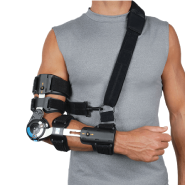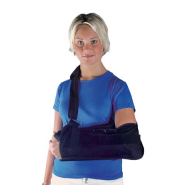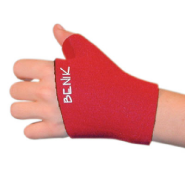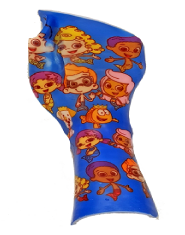Upper extremity orthoses can improve grasp, range of motion, and decrease muscle tone.
Wrist-hand orthotics
Wrist hand orthoses (WHO) are orthotic devices that support, align, and improve functional use of the wrist and hand. These can be prefabricated, made to measurements, or custom made to a cast of the limb. They are used for a variety of pathologies, including cerebral palsy, stroke, carpal tunnel, and rheumatoid arthritis.
Wrist-hand-finger orthotics
Wrist hand finger orthoses (WHFO) are similar to WHOs, but they have the added benefit of encompassing the thumb and/or fingers. They are also appropriate for the pathologies mentioned above, and are useful in maintaining range of motion of the wrist, hand and fingers. Finger orthoses (FO), which do not address the wrist and hand, are also available for conditions predominantly affecting the fingers.
Elbow and Shoulder Orthotics
Elbow orthoses support the elbow in cases of cerebral palsy (for contracture prevention), injury to ligaments causing instability, or weakened muscles, among others. They can be rigid or hinged depending on the needs of the client, and are often made from thermoplastics or softer materials such as neoprene.
Shoulder orthoses encompass the shoulder, or glenohumeral joint, and are often used for conditions such as brachial plexus injuries or post-stroke.

Elbow and shoulder orthoses can be combined to create one device, and can even have wrist, hand, and finger components. Each device is available custom made or prefabricated.



